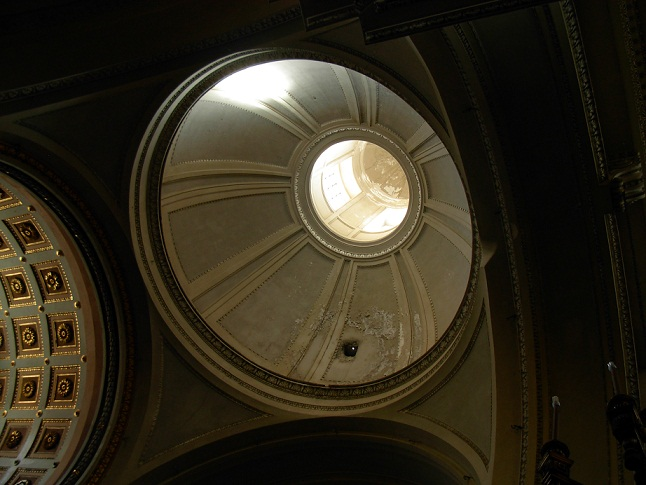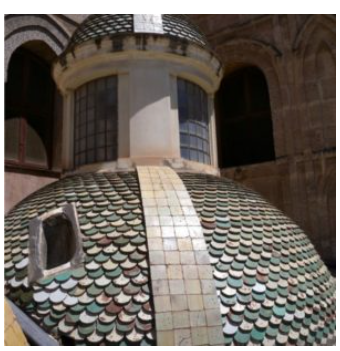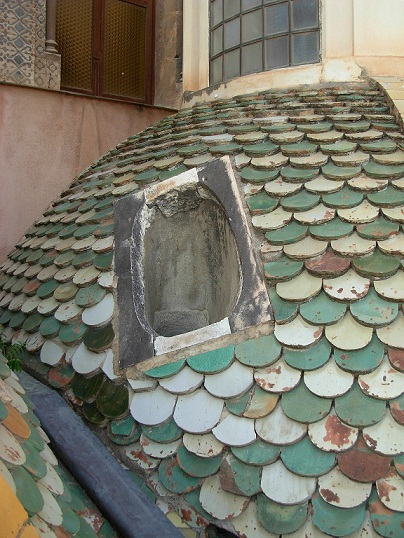The wings to the side of the hall were originally covered with a wooden roof; in the early eighteenth century they were profoundly transformed with the enlargement of
some chapels
and the creation of new rooms for the clergy.
The wooden roof was dismantled and the roof was rebuilt in the terraced style with brickwork vaults across the entire area of the chapels and the smaller aisles. With the subsequent works for the “
great restoration
“, carried out at the end of the 17th century, due to the advancement of the buildings on the external façade and the disappearance of the windows, a series of small domes were built in the area around the aisles to provide light to the inside of the cathedral.
 The side aisles, arranged according to the medieval layout, were lit by a continuous row of mullioned windows, richly decorated on the outside with
bichromatic inlaid embroidery
The side aisles, arranged according to the medieval layout, were lit by a continuous row of mullioned windows, richly decorated on the outside with
bichromatic inlaid embroidery
, according to the traditional decoration style, also used for the other parts of the building, in particular the
apses
, which can also be found in
Monreale Cathedral
.

